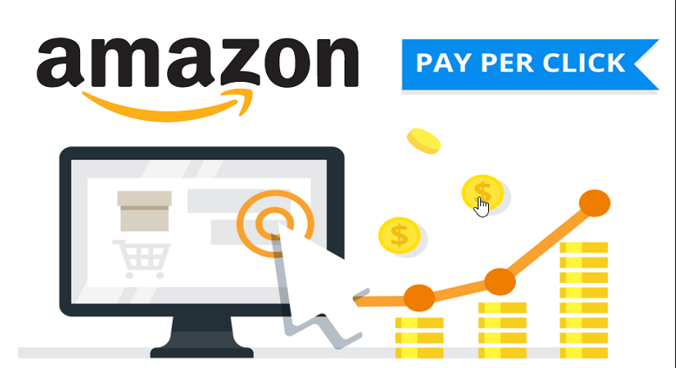Index Content
If you work with the ecommerce giant, you need to learn all about PPC campaigns on Amazon. It's not just about having a good advertising strategy, you also need to know how to analyse the results of your PPC campaigns.
You may think that your campaign is doing well, but the metrics may reflect the opposite, which is why it is so important to measure them, so you can know exactly what you are doing well and what you need to improve.
what does ppc mean?
PPC or pay per click is a digital advertising model in which the advertiser pays a fee each time a user clicks on one of their ads to visit their website. The idea of a pay per click campaign is to "buy visitors" to a particular site.
On Google and other platforms, the methodology is the same: every time your ad is clicked on, the search engine is paid a small fee.
When done right, PPC can help you gain quality leads and if you can create a seamless customer journey it could mean a huge ROI for your PPC efforts.
Although PPC is a very common option, it is not the only possible payment model for running online campaigns. Therefore, it is worth distinguishing it from others such as:
- PPM (pay per thousand): the advertiser pays a fixed amount per thousand impressions, that is, each time the ad is shown a thousand times to users. It should be noted that with this model we do not know how much we are going to pay for each visit, as it is possible that those thousand impressions generate many clicks, few or none.
- PPA (pay per acquisition): the advertiser pays for each time the user performs a specific action, for example, downloading an application. Therefore, the link between cost and objectives is even more evident than in the case of PPC.
Now let's focus on what relationship Amazon can have with marketing. Inbound Marketing says that to attract your potential customers you must offer them useful and relevant content by adding value at each stage of their journey. Only then will they end up finding you through different channels such as blogs, search engines and social networks. Well, Amazon owes all its success to that, to its relationship with its customers.
Thanks to its system, Amazon is able to offer its customers meaningful actions, such as reminding them if they are buying a repeat product, recommending other purchases, making specialised searches, etc. In other words, by gathering information from consumers, Amazon is able to personalise users' experiences on its website.
Amazon Advertising
With more than 300 million active users, Amazon has become the king of digital commerce and has created a large community of loyal consumers based on the collection of user data and the personalisation of their experience on the web. This is when the platform launched Amazon Advertising, a pay-per-click advertising system. Advertisers can place their ads in different locations, use different options to segment the audience and reach their target audience, and pay only when users click on them.
Within the Amazon PPC ecosystem, ads can be found both within Amazon's own website and elsewhere on the internet (through display advertising).
Amazon Advertising, everything you need to know. Click here to learn more about this Amazon tool .

Basically, anyone who has run an Adwords campaign can set up a PPC campaign on Amazon without too many problems. The structure is the same: campaigns > ad groups > products > keywords.
Because the only segmentation formula is by keywords, either automatically according to Amazon's particular criteria for your product or, most recommendably, manually.
how to choose the right keywords:
- Use different match types for your keywords
As with Google Ads, Amazon Advertising has different keyword match types that allow you to better control when your ads are displayed. Here are the main options available:
-
- Broad match: your ads will be shown for your chosen words and close variants, such as plurals, acronyms, partial matches and synonyms.
- Modified broad match: same as above, but you can specify words to be included in the search term by adding a + in front of them.
- Phrase match: your ads will be displayed when the search term includes your exact keyword, but may include other words before and after it.
- Exact match: your ads will only be displayed when the user enters the exact keyword in their search.
- Broad match: your ads will be shown for your chosen words and close variants, such as plurals, acronyms, partial matches and synonyms.
- Use negative match
Automated and broad match campaigns can end up showing your ads on searches that have little to do with your product or brand.
To avoid this, use negative match to rule out searches that include a particular term or terms to make your ad more relevant. You can choose both phrase and exact negative matches.
- Incorporate branded keywords
Sometimes the most cost-effective keyword you can incorporate into your PPC campaigns is your own brand name. Many advertisers don't use this resource because they believe it's a waste of money. After all, if the user is searching for you directly, they're going to find your products anyway.
The problem is that if you don't create campaigns with your brand name, your competitors may do and their ads may appear before your products, so branded campaigns are a great defensive strategy.
The advantages of doing PPC on Amazon
The main one is that because of Amazon's wide network and fame , you sell more and it shows. What may surprise you is that if you analyse the campaign closely, you will notice that not only have the promoted sales gone up, but also, in all likelihood, the organic numbers have improved.
There is indeed a correlation between one thing and the other. For Amazon, the priority is to show buyers the products that sell the most. Based on that, and some other quality and service metrics, it gives us a seller ranking. What you are able to sell has a significant weight on your position in organic searches. Logically, the higher you rank, the more you will sell, and yes: PPC indirectly influences SEO.
There are so many variables, business models and issues to take into account that it can be a bit confusing. However, it is something that you should at least consider if you are already selling there, because it is a tool that will allow you to open your sales spectrum within the marketplace and will give you many more opportunities.






